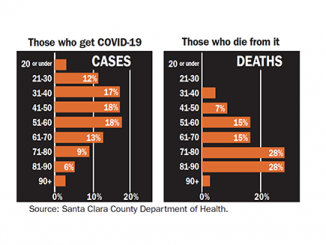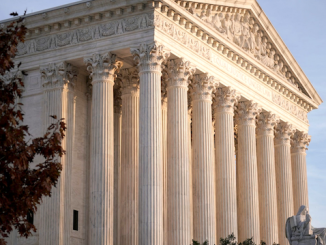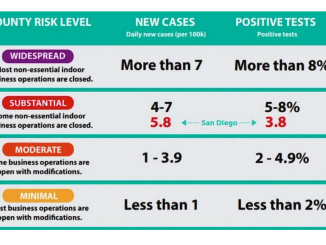
This story was originally printed April 24, 2020, in the Daily Post.
BY ELAINE GOODMAN
Daily Post Correspondent
A California law that gives the governor sweeping powers during a state of emergency, such as the current COVID-19 crisis, was enacted in 1970, although some of its provisions date back even further.
In issuing a stay-at-home order for California residents on March 19, Gov. Gavin Newsom cited Government Code sections 8567, 8627 and 8665 as giving him the authority to do so.
In particular, section 8627 says that during a state of emergency, the governor has complete authority over all state agencies, the right to exercise police powers, and the ability to issue and enforce orders “as he deems necessary.”
Newsom declared a state of emergency on March 4.
Section 8627 was added to the state’s Government Code in 1970 as a result of Assembly Bill 560, which created the California Emergency Services Act.
The bill’s seven authors included Carl “Ike” Britschgi, who was chairman of the Committee on Governmental Administration and was the first author listed on the bill. Britschgi was a Redwood City councilman and mayor before his election to the Assembly.
In addition to Britschgi, the authors included two other Republicans, Gordon W. Duffy and Eugene Chappie; as well as Democrats Carlos Bee, Wadie Deddeh, Walter Powers and L.E. Townsend. Five of the authors, including Britschgi, served at the time on the Governmental Administration committee, which heard bills that would amend the state’s Government Code.
The lawmakers weren’t starting from scratch on the bill.
The California Disaster Act of 1945, signed into law by Gov. Earl Warren, was intended to coordinate the responses of cities, state agencies and the federal government during a disaster.
“The state has long recognized its responsibility to provide for preparedness against disasters that may result from such calamities as flood, fire, earthquake, pestilence, war, sabotage and riot,” the Act said.
The 1945 Act gave the governor power to declare a state of emergency, authority over state agencies, police powers, and the ability to issue and enforce orders. It assigned responsibility for emergency preparation to a single state agency.
The California Emergency Services Act of 1970 superseded the California Disaster Act and established the Governor’s Office of Emergency Services, while preserving emergency authorities granted to the governor. The new act was moved into a different section of state law, the Government Code.
Unanimous approval
The Emergency Services Act went through a series of amendments, including a name change from the Emergency Preparedness Act. On its final vote in the Assembly, AB560 was approved unanimously. Gov. Ronald Reagan signed it into law in September 1970.
Despite handing over a substantial amount of power to the governor during a state of emergency, AB560 seemed to generate little controversy. A search of statewide news archives from 1970 found little mention of the bill.
The Act gives the governor power to spend money “from any fund legally available” in response to an emergency. It authorizes the governor to commandeer any private property or personnel deemed necessary, with the state providing a “reasonable” reimbursement.
Since declaring the COVID-19 state of emergency on March 4, Newsom has issued a number of executive orders, in addition to the stay-at-home order.
A March 10 order told residents to follow public health directives, and prepared the state to commandeer property for temporary homes and medical facilities for quarantining or treating people. It allowed local and state governments to meet via teleconference and postponed the tax filing deadline.
A March 17 executive order eased restrictions on commercial drivers, including limits on the number of hours worked, so they could deliver medical supplies or food for restocking stores. Another executive order suspended standardized testing for students.
When does a state of emergency end?
But a governor’s emergency powers don’t last indefinitely. According to the Emergency Services Act: “The governor shall proclaim the termination of a state of emergency at the earliest possible date that conditions warrant. All of the powers granted the governor by this chapter … shall terminate when the state of emergency has been terminated.”




It’s funny that Republicans like to say that this pandemic is a plot by Democrats to take away Trump’s only accomplishment, the economy. And yet the law allowing the SIP was signed by, of all people, Ronald Reagan, Mr. Republican.
Why do you, and so many otheres need to take every opportunity to whine and bash for political gain? Read the article for what it is and move on.
After the SIP is over, we need to take a new look at this law. I think it gives the governor too much power without oversight. An example is the $1 billion he spent on PPE from China that never arrived. Sure, his people say all of the money will be coming back, but he shouldn’t have bypassed the normal procurement process in the first place. I think we can have checks and balances while still responding urgently to an emergency.